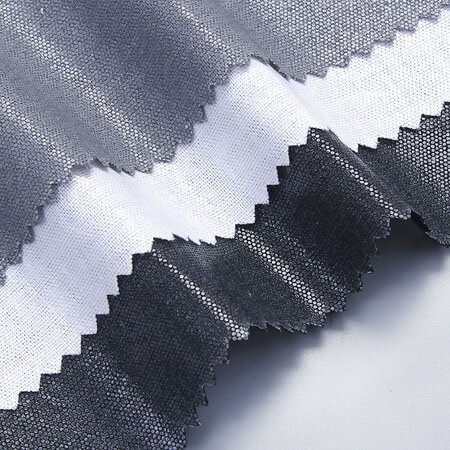Introduction
Shirt interlining shrinkage matters a lot when making clothes. When fabrics used in shirts shrink, it affects how the shirt fits and looks. Interlining is like a middle layer in shirts, and it helps keep the shirt in shape. If this middle layer shrinks too much, it can make the collar look weird, the seams puckered, and the whole shirt does not fit well.
That’s not good for people who wear the shirts because they won’t feel comfortable or look their best. Manufacturers who make shirts need to know how to control this shrinkage. By doing that, they can make shirts that fit nicely, feel good, and last longer. This makes customers happy because they get good quality shirts they like wearing.
So, controlling interlining shrinkage is super important for making shirts people love.
What Exactly Is Shirt Interlining, and Why Does It Matter?
Shirt interlining is a hidden layer between the outer fabric and the inside of a shirt. It gives the shirt structure and keeps it looking neat. This layer can be made from different materials, like cotton or polyester.
Importance of Interlining in Shirt Construction
Interlining is super important because it helps the shirt keep its shape. Think about the collar, cuffs, and front plackets—they must stay crisp and firm. Without interlining, these parts might look floppy or lose their sharpness over time.
Also, interlining makes the shirt stronger and more durable. It adds a bit of thickness and stiffness to the fabric, so the shirt doesn’t wrinkle easily. This means you can wear the shirt all day and still look good and feel comfortable.
Understanding interlining is key for people who make shirts. It’s not just an extra layer—it makes a shirt well-made. By choosing the right interlining materials and using them well, shirt makers can create clothes that fit great, look sharp, and last long. So, interlining isn’t just a small detail—it’s a big deal in making shirts people love wearing.

What Is Shrinkage in Fabric, and How Does It Affect Shirts?
Understanding Fabric Shrinkage
Fabric shrinkage happens when the material becomes smaller after washing or heating. It’s like when your favourite shirt gets tight after washing. This shrinkage occurs because the fibres in the fabric tighten up and pull together, making the material shrink.
Fabrics made from natural materials like cotton or wool tend to shrink more than those made from synthetic materials like polyester. Manufacturers often wash or steam the fabric to reduce shrinkage before making shirts. This helps stabilize the fibres and prevent excessive shrinking.
How Shrinkage Impacts Shirt Construction and Fit
Shrinkage can cause problems with how shirts are made and how they fit. When fabric shrinks, the size of the shirt changes, making it smaller overall. This can lead to issues like seams not lining up properly, the shirt losing shape, or the fit becoming too tight.
For example, if the fabric used for the shirt body shrinks unevenly, the seams can pucker, or the shirt can twist out of shape. Shrinkage in the collar or cuffs can make these areas feel too snug or uncomfortable.
Shrinkage can also affect how the shirt looks. It might cause patterns to warp or colours to fade unevenly, making the shirt appear worn out before its time.
To deal with shrinkage, manufacturers try different things when making shirts. They may use fabrics that shrink less, treat the fabric to reduce shrinkage, or design shirts in a way that allows for some shrinkage without ruining the fit.
But even with these efforts, some shrinkage is normal, especially with natural fibres. That’s why following the care instructions on your shirts is important. Washing them in cold water, using gentle cycles, and air-drying them can help prevent excessive shrinkage.
Why Should We Care About Interlining Shrinkage?
Effects on Shirt Structure and Appearance
Interlining shrinkage can seriously mess up how a shirt looks and feels. Imagine if the collar starts to droop or the seams pucker—that’s not a good look. When the interlining shrinks too much, it can distort the shirt’s shape, making it seem all wonky and out of place.
Not only that, but interlining shrinkage can also affect the overall appearance of the shirt. It might cause wrinkles or creases in places where they shouldn’t be, making the shirt look messy and unkempt. Plus, if the fabric starts to bunch up or warp, any patterns or designs on the shirt might look distorted or stretched out.
Impact on Wearer Comfort and Longevity of the Garment
Shrinkage in the interlining affects more than just the shirt’s appearance—it can also affect its feel. For example, if the collar or cuffs feel too tight or stiff due to shrinkage, it can be uncomfortable. Nobody wants to feel like their shirt is strangling them or digging into their skin.
Let’s not forget about the shirt’s longevity. If the interlining shrinks too much, the fabric and stitching can weaken, causing the shirt to wear out faster. You might start to notice fraying seams, popped buttons, or even holes in the fabric—all because of shrinkage.
For everyday folks, this means replacing their favourite shirts sooner than they’d like, which can be a hassle and a waste of money. And for manufacturers, it means having unhappy customers who won’t buy their shirts again because they didn’t hold up well over time.
So, whether you’re wearing the shirt or making it, you definitely want to avoid interlining shrinkage. By choosing the right materials and construction methods, you can help ensure that your shirts stay looking and feeling great for as long as possible.

What Factors Contribute to Interlining Shrinkage?
Influence of Fabric Composition
The kind of fabric used in a shirt affects how much the interlining shrinks. Fabrics like cotton and wool shrink more than materials like polyester or nylon. Natural fibres can compress more when heated or wet, so shirts made from mostly natural fibres might see a lot of shrinkage in the interlining.
Role of Interlining Material and Construction
The material and how the interlining is made also affect shrinkage. If the interlining is made from low-quality materials or put together poorly, it will likely shrink significantly. Plus, if it’s not attached well to the shirt fabric during manufacturing, it might shrink unevenly or lose its shape.
Effects of Laundering and Care Methods
How you wash and take care of your shirt can make the interlining shrink more. Washing shirts in hot water or using a hot dryer can cause the interlining to shrink more than if you wash them in cold water and let them air dry. Also, harsh detergents or chemicals can weaken the interlining fibres, making them more likely to shrink over time.
How Can Interlining Shrinkage Be Managed?
Pre-shrinking Techniques for Fabric and Interlining
It’s smart to shrink the fabric and the interlining before making shirts. This means washing or steaming them to prevent them from shrinking later. By doing this, makers can keep the fabric from getting smaller after the shirt is made, so it stays the same size for longer.
Best Practices in Garment Construction to Minimize Shrinkage
Making shirts the right way is key to preventing interlining shrinkage. Attaching the interlining to the shirt fabric correctly during making helps it stay in place and shrink evenly. Strong stitching and flat seams also help prevent the fabric from pulling and puckering as it shrinks. These things allow makers to make shirts that last without getting too small.
Care and Maintenance Tips for Reducing Interlining Shrinkage
Proper care can also prevent interlining shrinkage. Washing them in cold water instead of hot and letting them air dry instead of using a hot dryer can help. Using gentle detergents without harsh chemicals can keep the fabric strong and less likely to shrink. Also, washing gently can keep the shirt’s shape and stop it from getting smaller.

What Standards and Measures Are in Place to Ensure Quality?
Importance of Quality Control in Garment Manufacturing
It’s really important to ensure good quality clothes. Quality control means checking every step of making clothes to ensure they turn out well. In garment making, this means checking the fabric, stitching, and fit of shirts to ensure they’re good. It helps catch any mistakes early and ensures customers get shirts they like.
Testing Methods for Interlining Shrinkage
To check for interlining shrinkage, makers use different tests. They might wash or heat the fabric and interlining to see how much they shrink. They could also measure them before and after washing to see if they change size. By doing these tests, makers can figure out how much the interlining might shrink and take steps to prevent it from happening too much.
Compliance With Industry Standards and Regulations
Clothes makers have to follow rules set by the industry and government. These rules cover things like fabric safety, environmental impact, and worker treatment. By following these rules, makers ensure their shirts are safe to wear, don’t hurt the environment, and are made fairly. It’s a way of ensuring everyone is treated right and that the shirts being made are really good.
Conclusion
Making sure the shirt lining doesn’t shrink too much is important. By first shrinking the fabrics and linings, using good ways to put shirts together, and following care instructions, shirt makers ensure their products last longer and stay nice. Testing helps find problems with shrinking while following industry rules to ensure shirts are safe and made the right way.
Checking quality during production catches problems early, so the shirts turn out better. By doing these things, both makers and wearers can enjoy shirts that look and feel great for a long time. It’s all about ensuring everyone is happy with their shirts.

FAQs
Why Is Fabric Shrinkage Important in Shirt Interlining?
Fabric shrinkage affects garment size and fit, which are crucial for comfort and appearance.
Why Is Shirt Interlining Important in a Garment?
Interlining adds structure and support, enhancing the garment’s shape and durability.
What Are the Characteristics of Interlining Fabric?
The interlining fabric should be durable, flexible, and compatible with the garment fabric for optimal performance.

